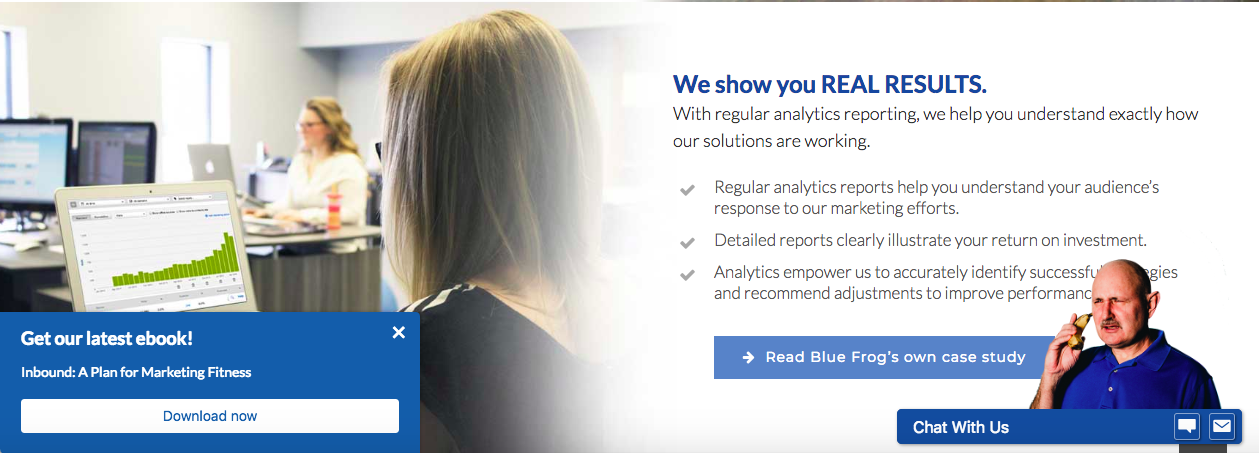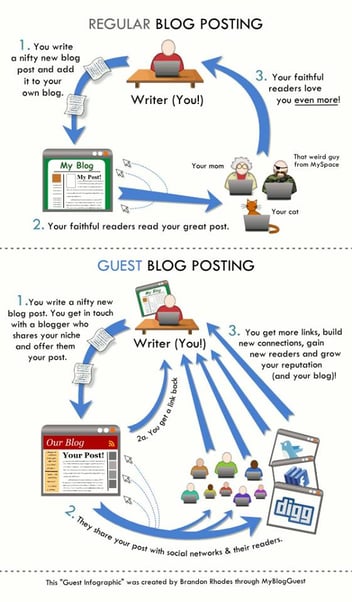
If you ask someone what they think of website pop-ups, you’re most likely going to hear that pop-ups are annoying. But the truth is that when used correctly, pop-ups can actually create a simplified conversion path and enhance user experience. In fact, pop-ups can be an important piece of an inbound marketing strategy that’s built to convert website visitors into leads for your business.
What Is Inbound Marketing?
Inbound marketing is marketing with a magnet instead of a hammer. It’s the practice of attracting visitors to your website through channels like search engines, social media, and your blog with compelling content and an effective search engine optimization (SEO) strategy for your website. Unlike outbound marketing, inbound marketing is not interruptive; it's customer focused and meant to add value and build credibility.
What Is a Pop-Up?
Pop-ups are overlay boxes, banners, or slide-in boxes with simple forms that appear when website visitors have met a particular trigger criterion. Pop-ups originated in the late 1990s as a form of advertising. Users found these pop-ups to be annoying and didn’t appreciate being offered free cruises and prize money for fear of being scammed, so over time, pop-ups disappeared. Today, they’re back and being used by marketers instead of advertisers. Marketers use pop-ups as tools to gain subscribers, build email lists, and generate new contacts for businesses.
Have Your Cake and Eat It, Too
I like to think the answer to the age-old question, “Can you have your cake and eat it, too?” is always, yes! Pop-ups, like cake, are enticing. We marketers see them as sweet, little, lead-generating machines. However, those of us who practice inbound marketing may be weary of their interruptive nature. When used correctly and with the user in mind, pop-ups can enhance user experience to create a seamless path to conversion.
If you’re still struggling with this answer, then try thinking about pop-ups in relation to email marketing. Email is another inbound marketing tool that, over time, has been abused in ways that make it spammy and annoying. As inbound marketers, we’ve learned to adapt our email marketing strategies to add value by building segmented lists and only providing content that’s relevant to our recipients. The same can be done with pop-ups through strategic placement and valuable offers. Simply keep the user in mind when building pop-ups, and you’ll be able to set yourself up for success.
Tips for Creating Pop-ups That Work
Follow these three simple tips when building pop-ups to ensure your pop-ups are helpful instead of annoying to users.
-
Use Strategic Placement and Triggers
Most pop-ups get a bad rep because they interfere with user experience. They appear too soon and take over the entire screen. They’re hard to minimize and can leave users feeling frustrated. However, if you keep your user in mind, you can escape these frustrating habits.
For example, you can capture users who are engaged with you blog content by triggering a banner pop-up halfway down the page. At this point, the reader is interested in your content, and the banner will not interfere with their continued reading.
-
Offer Valuable and Relevant Content
Another issue users have with pop-ups is that they’re irrelevant to them. Ensure your pop-ups are valuable by offering content that correlates with the webpage on which they appear or provides answers to common questions asked at your targeted audience’s stage of the buyer’s journey.
For example, if on a blog post about the impacts of search engine optimization on a business website, consider offering a free ebook that answers the question, “How Can I Use SEO to Boost Sales?”
-
Don’t Forget Mobile
While this tip seems simple and obvious, it’s more important than you’d think. Google will penalize websites that use obtrusive interstitials (a.k.a. pop-ups that ruin user experience) on mobile devices. To avoid this penalty, use pop-ups that don’t take up the entire screen or consider removing pop-ups from mobile altogether.
Use these tips to help you get started developing a lead generating pop-up strategy on your website. If you’re interested in learning more about aligning pop-ups with inbound marketing, Blue Frog's inbound marketing strategists are ready to work with you!
Blue Frog is a marketing agency with offices located in Denver, CO, Des Moines, IA, and Huron, OH. If you don't live in any of these locations, don't worry. We work with businesses all across the nation. Contact us today!



